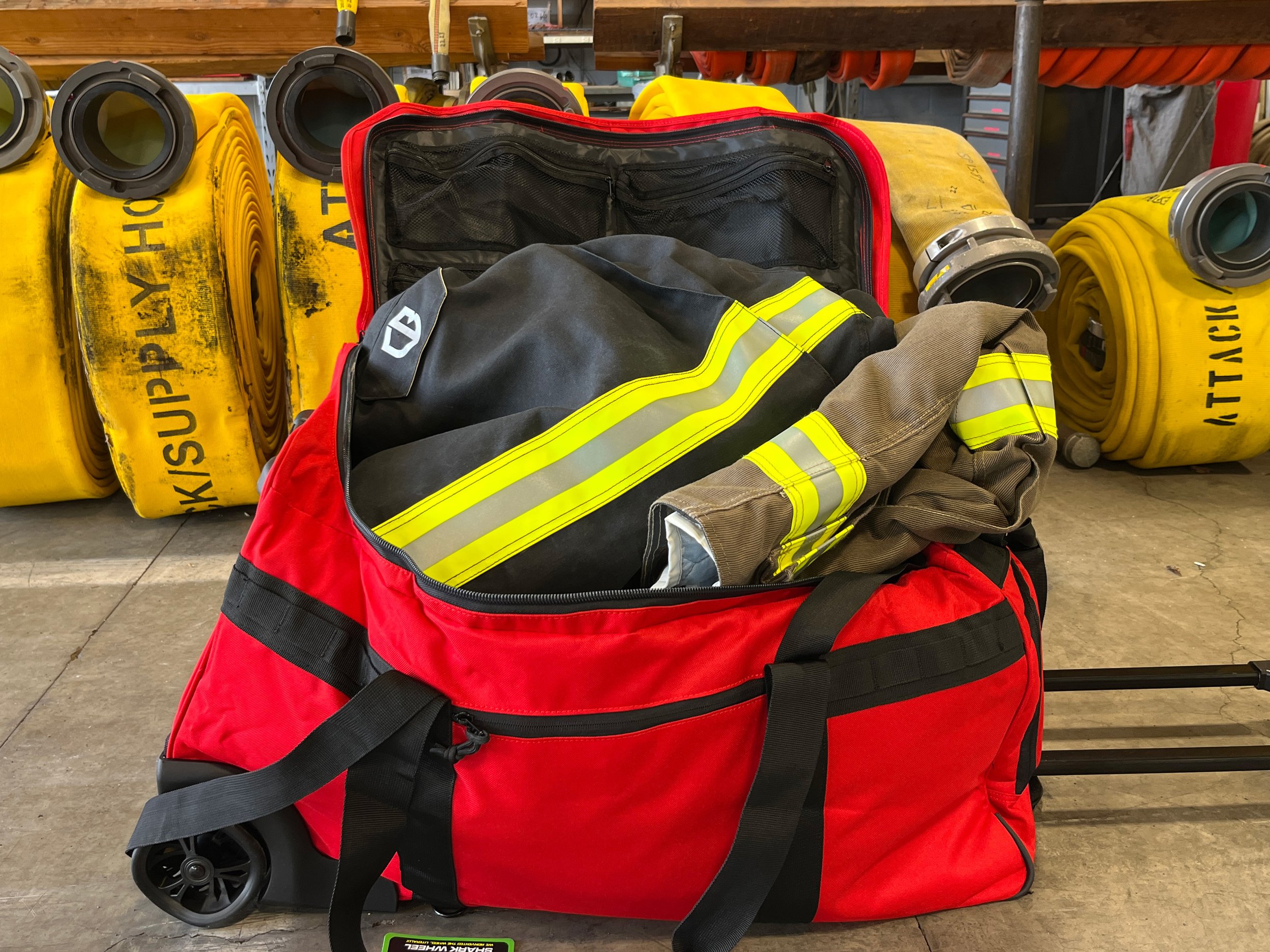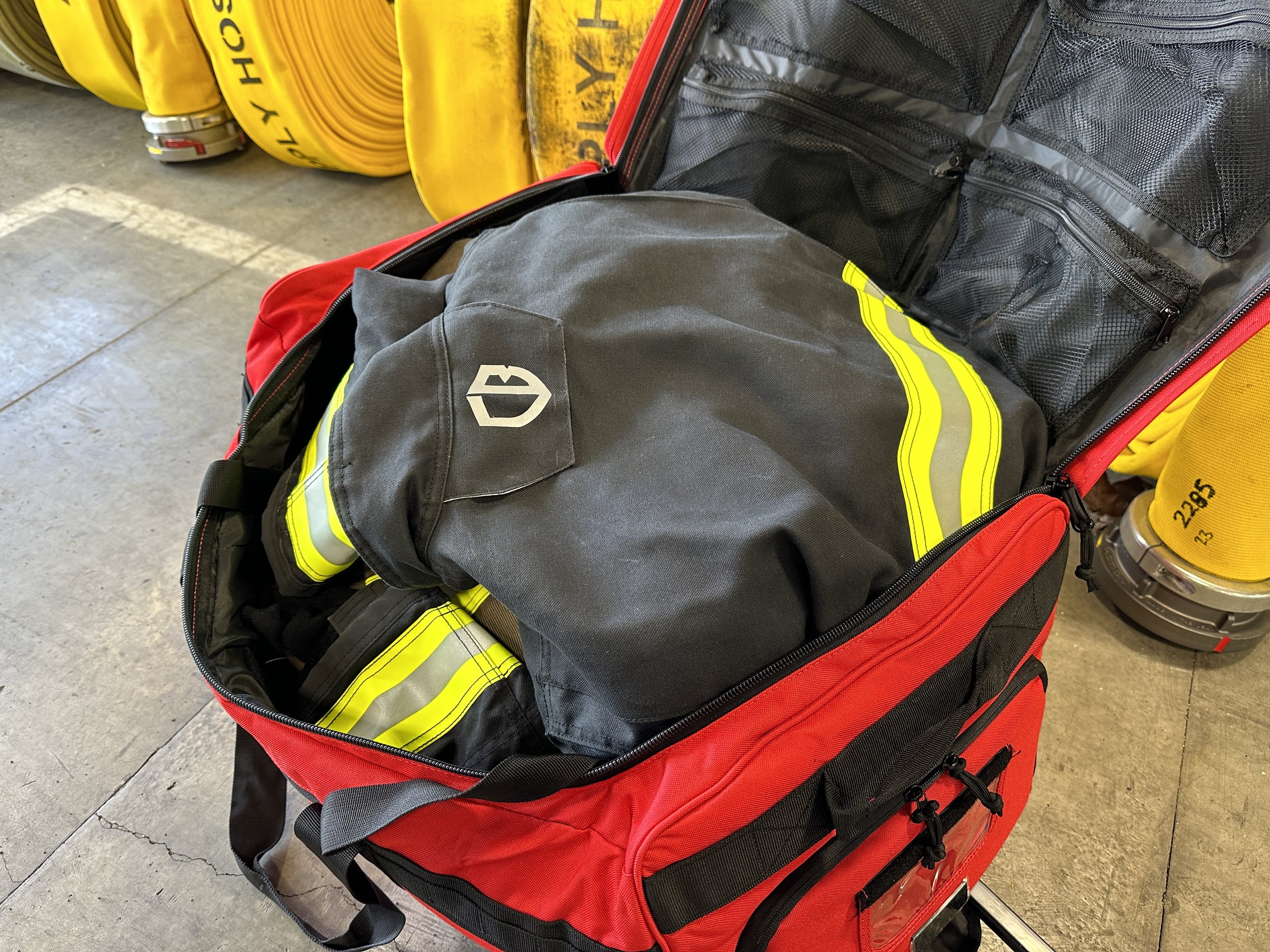In firefighting, preparation is key, and at the heart of that preparedness lies in your gear bag. How you pack it can make all the difference in the heat of the moment. In this extensive guide, we will delve deep into the essential tips and strategies for packing a firefighter gear bag that ensures you have everything you need right when you need it.
Essentials of Firefighter Gear Bag Packing
Selecting the Right Gear Bag
Your gear bag is your trusty companion, so choosing the right one is paramount. Consider factors like size, durability, and ergonomic design to ensure it can handle the demands of firefighting. A high-quality bag can withstand the toughest conditions. You can check out the CrewBoss Rolling Gear Bag by going here.
Organizing Your Gear
Efficient organization is key to a well-packed gear bag. Group your gear by type – personal protective equipment (PPE), tools, equipment, and additional clothing. This will help you quickly locate items during emergencies. Make sure essential items are easily accessible.
Prioritizing Essential Gear
Start by packing your PPE – helmet, gloves, turnout gear, and SCBA Facepiece – in a way that allows easy access. Then, consider your tools and equipment, followed by spare clothing.
Packing Tips
Specialized Equipment Considerations
Depending on your firefighting role, you may need specialized gear. We suggest tailoring your packing approach to accommodate these unique requirements.
Learn to maximize space and minimize clutter in your gear bag. This involves strategic placement of items and making the most of available compartments.
Discuss techniques from other firefighters in your field and their experiences that you could apply to yourself.
Different firefighting scenarios may require unique gear and packing strategies. Gain valuable insights into tailoring your gear bag for various situations.
Packing a firefighter gear bag requires careful attention to detail to ensure that all necessary equipment is readily accessible and in proper condition for immediate use. Here are some common mistakes to avoid when packing a firefighter gear bag:
Forgetting Essential Items: It's crucial to include all necessary gear, such as helmets, gloves, boots, flashlights, radios, and personal protective equipment. Forgetting any of these items can compromise safety and effectiveness on the job. We recommend coming up with a small list of items you absolutely can’t forget to reinforce their importance.
Poor Organization: You should pack gear in a way that makes it easy to access in an emergency. Poor organization can lead to delays when time is of the essence. Items should be arranged logically, with frequently used items easily reachable.
Neglecting Personal Protective Equipment (PPE) Maintenance: PPE should be checked regularly for wear and tear, and damaged gear should be repaired or replaced. Packing gear without inspecting it for damage or cleanliness can lead to unnecessary risks. You can learn more about PPE care by going here.
Overpacking: Overpacking can make the gear bag heavy and difficult to transport. It’s essential to strike a balance between being prepared and being mobile.
Failing to Include Personal Hydration and Nutrition: Long incidents can lead to dehydration and fatigue. It’s important to pack water and snacks to maintain energy levels and hydration.
Ignoring Weather-Specific Gear: Depending on the climate or season, additional items such as rain gear, cold weather clothing, or sun protection might be necessary. Failing to adjust the contents of the gear bag to the weather conditions can lead to discomfort or health issues.
Lack of Spare Batteries or Power Sources: Essential equipment like flashlights and radios depend on power. Forgetting to pack spare batteries or alternative power sources can leave a firefighter without working equipment when it’s most needed.
Not Personalizing the Gear Bag: Each firefighter may have personal preferences or additional items they need, such as prescription glasses, medications, or specific tools. Not customizing the gear bag to include these personal items can affect performance and comfort.
Leaving Out Communication Devices: Communication is key in emergency situations. Failing to pack or check communication devices, like radios and cell phones, can isolate a firefighter from their team.
Forgetting to Update Gear: As technology and equipment improve, it’s important to update the gear bag contents. Using outdated or obsolete equipment can hinder effectiveness and safety.
Wildland Gear Bag Essentials
Wildland firefighters must prepare for extended periods in remote areas, often with limited access to resources and reinforcements. Their work involves not just combating fires but also managing controlled burns, clearing brush, and other preventative measures. The specific demands of wildland firefighting require gear that is versatile, durable, and suitable for a wide range of environmental conditions. Gear must also be lightweight and compact, as firefighters may need to carry it over long distances or rugged terrain.
The gear bag of a wildland firefighter must include items tailored to the challenges of fighting forest, grassland, and other types of wildland fires. Essential items include:
Specialized Clothing: Flame-resistant shirts and pants, boots with heat protection and good traction, gloves, and hats.
Navigation and Communication Devices: GPS units, maps, compasses, and radios.
First Aid and Survival Kits: Including bandages, antiseptic, water purification tablets, emergency food supplies, and fire-starting tools.
Weather Considerations
Extreme Heat: Lightweight, breathable, and moisture-wicking clothing to prevent heat exhaustion.
Cold: Layered clothing, thermal undergarments, and insulated, waterproof boots to maintain warmth.
Wet Environments: Waterproof gear and quick-drying materials to stay dry and prevent hypothermia.
You can learn more about which fabrics CrewBoss uses for its wildland garments here.
Packing for Long Deployment
For extended deployments in remote areas, careful planning is essential. In addition to the basic gear, wildland firefighters should pack:
Extended Food and Water Supplies: Non-perishable food items, high-energy snacks, and large-capacity water containers.
Extra Clothing and Personal Items: Changes of clothing suitable for varying weather conditions and personal hygiene items.
Shelter and Bedding: Lightweight tents, sleeping bags, and ground pads for rest periods.
Charging Devices for Electronics: Solar chargers or battery packs to keep communication and navigation devices operational.
When it comes to firefighting, having the right gear can mean the difference between life and death. Firefighters rely on their equipment to protect them in the most challenging conditions, and the CrewBoss Rolling Gear Bag has emerged as an essential tool for the modern firefighter. The CrewBoss Rolling Gear Bag is a must-have for firefighters, examining its design, durability, functionality, and the benefits it brings to those who answer the call.
A Revolution in Firefighter Gear Bag Design
The CrewBoss Rolling Gear Bag provides a revolutionary piece of equipment due to its thoughtful design. Firefighters often carry heavy gear, and this rolling bag makes transportation more manageable. Its rugged construction ensures it can withstand the toughest conditions.
Built to Last
Firefighters often carry heavy gear, and this rolling bag makes transportation more manageable. Its rugged construction ensures it can withstand the toughest conditions. The shark wheel technology ensures you can transport your equipment over any terrain.
Functionality at Its Best
One of the standout features of the CrewBoss Rolling Gear Bag is its functionality. Firefighters carry a wide array of equipment, from helmets and gloves to turnout gear and SCBA Facepiece. This bag offers multiple compartments and pockets to keep everything organized.
Easy Transportation
Perhaps the most significant advantage of the CrewBoss Rolling Gear Bag is its ease of transportation. Firefighters frequently find themselves in situations where they need to move quickly. This bag's sturdy wheels and telescoping handle make it effortless to transport even when fully loaded. This mobility can be a game-changer when navigating through challenging terrain or tight spaces during a rescue operation.
Benefits for Firefighters
The CrewBoss Rolling Gear Bag isn't just a piece of luggage; it's a tool that enhances a firefighter's effectiveness and safety. Here are some key benefits it offers:
Quick Deployment: With all gear organized and easily accessible.
Reduced Fatigue: Carrying heavy gear can lead to fatigue, affecting a firefighter's performance. The rolling design of this bag alleviates that strain, allowing firefighters to focus on the task at hand.
Increased Efficiency: Efficient organization means less time searching for equipment and more time spent on other tasks.
Durability: The bag's robust construction ensures it can withstand the toughest conditions, providing long-term value for firefighters.
Having the right gear can make all the difference. The CrewBoss Rolling Gear Bag is a game-changer, ensuring that firefighters are well-prepared for any situation. When it comes to frontline protection, the CrewBoss Rolling Gear Bag is not just a must-have; it's a lifeline they can rely on.
Contact Us
Please, don’t hesitate to contact our sales team at CrewBossSales@crewbossppe.com to learn more about how the Rolling Gear Bag will upgrade your next mission. We’d be more than happy to help. Whatever your mission, feel prepared and safe with CrewBoss PPE.










